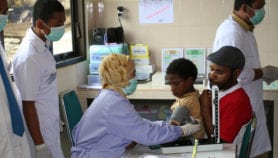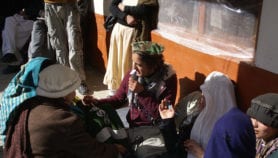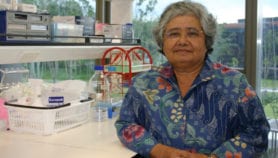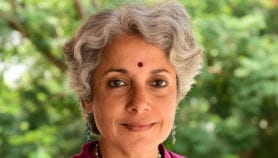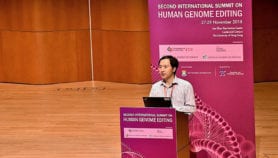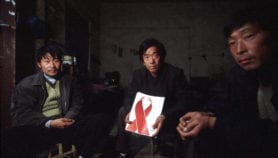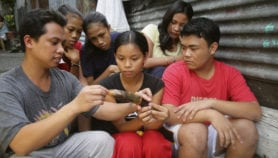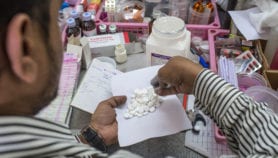Send to a friend
The details you provide on this page will not be used to send unsolicited email, and will not be sold to a 3rd party. See privacy policy.
[MELBOURNE] What few seats left empty at the 20th International AIDS conference in Melbourne, Australia, have taken on a special meaning.
On the opening day of the conference (20 July), participants tied red ribbons around the Melbourne Convention Centre and held a minute of silence in memory of the six delegates who were among the 298 people killed when Malaysia Airlines flight MH17 was shot down over eastern Ukraine on 17 July.
"We should turn this great misfortune into a resolution and a commitment," said former Australian High Court Justice and anti-HIV discrimination campaigner Michael Kirby in his welcome address. "In a strange way, the terrible event that has happened has strengthened the resolve of those meeting here in Melbourne to ensure we bring an end to this fearsome epidemic.”
The conference paid tribute to Joep Lange, a scientist engaged in AIDS research and former president of the International AIDS Society; Martine de Schutter and Pim de Kuijer, both from the Dutch NGO Stop AIDS Now; Lucie van Mens, support director at The Female Health Company in the Netherlands; Glenn Thomas, WHO media officer; and Jacqueline van Tongeren, member of the Amsterdam Institute for Global Health and Development and Lange’s partner.
Amid the sadness, there was also a strong sense of hope and purpose as various speakers accentuated the main theme of the world’s biggest AIDS conference, “Stepping up the pace”.
“More has been done in the last three years than in the last 25 years,” said Michel Sidibé, executive director of UNAIDS, the Joint UN Programme on HIV/AIDS. He echoed in his opening speech the primary message of the recent UNAIDS Gap report that the AIDS epidemic can be stabilised by 2030.
In his video message, UN secretary general Ban Ki-moon noted that since 2001 when the Millennium Development Goals (MDG) came into effect — specifically, MDG number six on combatting HIV/AIDS, malaria and other diseases — new HIV infections have decreased by 38 per cent worldwide.
Advances in antiretroviral drugs means HIV is no longer a death sentence so long as treatment is available. But of the more than 2.3 million new cases last year, Sub-Saharan Africa accounts for two-thirds and only around 40 per cent have adequate access to medicines.
Other speakers noted that many of the largest hurdles in the HIV/AIDS fight have more to do with policy than science.
Brent Allan, executive officer of the NGO Living Positively Australia, said getting people to seek treatment is difficult when 19 million of the world's 35 million people living with HIV are unaware of their status. This is due to social pressures such as stigma, discrimination, exclusion and laws criminalising homosexuality.
Youth representative Ayu Oktariani shared with the 12,000 delegates from around the world her personal experience of being diagnosed with AIDS in her native country of Indonesia. “I felt like I had no right over my body, I was scared. It’s not just about identifying myself as a young woman with HIV, but having to face the speculation over my sexuality.”
Oktariani called for a policy of inclusion of people with HIV as part of the process of working towards solutions on battling the disease.Sharon Lewin, co-chair of the conference and an infectious diseases physician, tackled the effectiveness of available medicines in relation to the recent case of the “Mississippi baby”, which involved the relapsing of an infant believed to have been cured of AIDS.
“This isn’t a setback but an opportunity for researchers to learn from,” said Lewin. “Moving towards a cure for HIV/AIDS will require further advancements in scientific research and the breaking down of policy barriers so that nobody is left behind.”
This article has been produced by SciDev.Net's South-East Asia & Pacific desk.






